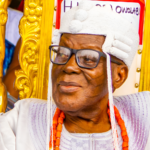Mrs. Temitope Mark-Odigie
Introduction
Long gone are the days where promising broadcasters and presenters had to go through the intricacies of traditional media outlets before they could practice their craft, let alone make a name for themselves in the media industry. The broadcasting industry has been dramatically transformed in this digital era, contradicting the preexisting one-way communication standards of traditional channels like radio and television. Now, social media has made broadcasting direct, interactive, and feasible without less rigid requirements. Interestingly, audiences no longer receive messages hook, line and sinker, as they are now actively involved in shaping narratives, and giving quality engagement with broadcasters live on air or in action.
The advancement of social media has therefore created a significant shift in the broadcasting industry, such that traditional outfits are now constantly on the go with media convergence. Media moguls are now forced to modify their approaches by incorporating social media tactics to their service. For broadcasters who already have names for themselves, it’s easy to attract social media audiences. Hence, they turn to leveraging retweets, shares, and live interactions to keep their audiences engaged and also gauge the impact of their work.
Global 2023 statistics from the report curated by the Pew Research Center indicates that over 55% of adults globally consume news from social media platforms, as traditional news sources like newspapers and television continue to decline. Similarly, in 2022, the survey by NOI Polls revealed that 74% of young Nigerians consume news from social media rather than television. These statistics make it clear that social media has taken centre-stage for broadcasting, it is no longer supplementary — it’s essential.
The Changing Landscape of Audience Engagement
Prior now, TV and radio stations connected with viewers through set showtimes, text message feedback, and phone-in parts. They measured a show’s popularity by its Nielsen ratings or audience share, and relied on limited viewer input. But social media has changed the game. Now, people engage with shows as they happen, often shaping the content in real time.
Take CNN, for example. When they cover big political events, they now show live Twitter polls and viewer comments on screen. This creates a more lively back-and-forth between the news station and its audience. This means viewer input becomes part of the live talks. These cases show how TV and radio stations can boost their reach and sway by engaging viewers beyond the usual channels.
Audiences are now very restless like never before, and since most broadcasting audiences are young people connected to social media, it becomes difficult to not integrate social media updates or features in broadcasting content; bringing us to the era of media convergence.
How Social Media Enhances Broadcasting
Real-Time Audience Interaction
One of the standout perks of social media is how it enables instant communication. Platforms like Twitter, Facebook, and YouTube let broadcasters engage with viewers in real-time during live shows, creating a truly immersive experience. A quick instance is the show anchored by me, “Your View,” designed to delve into real-time societal concerns and create new dimensions to liberate, inform and empower people, particularly its target audience – women. While on-air, audience interaction is very different from traditional processes. At the go, audiences share their input via tweets and comments, and perhaps an information shared was false; it would be addressed immediately. The rise of digital media has ushered a form or directness; giving no room for broadcasting mishaps.
Personal Branding for Broadcasters
Social media offers broadcasters a fantastic opportunity to build their personal brands beyond just their TV or radio shows. Journalists like Christiane Amanpour and Trevor Noah use these platforms to connect with their audience outside of their formal roles, sharing behind-the-scenes glimpses, personal opinions, and deeper discussions. In the same vein, broadcasting has afforded me the following I have today. It gave me a personal brand, having lots of women testify to the weight of my influence. Digital channels like Instagram, Facebook and Twitter are used to promote interviews and interact with fans which ultimately broadens my influence beyond traditional television. By crafting a personal brand on social media, broadcasters can stay relevant even as the way people consume media continues to change.
Cross-Platform Storytelling
Today’s audiences consume content in a variety of ways across different platforms. To stay effective, broadcasters need to embrace cross-platform storytelling, where a single narrative unfolds across TV, social media, and digital channels. For instance, Al Jazeera’s “AJ+” division creates short, snappy news videos tailored for social media while still delivering in-depth investigative reports on television. Similarly, Nigeria’s Channels TV takes key highlights from interviews and transforms them into Instagram Reels and Twitter threads, ensuring that even those who miss the live broadcast can still engage with the content.
Content Virality and Amplification
A captivating broadcast segment can reach far more people through social media sharing than it ever could through traditional viewership alone. Those viral moments—whether they’re planned or just happen by chance—can significantly boost a broadcaster’s impact. Take, for instance, Oprah Winfrey’s interview with Prince Harry and Meghan Markle in 2021. While millions tuned in to watch it live on TV, the most buzzworthy segments quickly spread across Twitter, YouTube, and Instagram, racking up over 50 million views on digital platforms in just a few days. The viral nature of these clips highlighted how essential social media is for enhancing broadcast content.
Challenges and Ethical Considerations
While there are advantages to broadcasting use of social media, the marriage of the two is not without its challenges, especially related to misinformation, audience backlash, and credibility.
Misinformation and Quickness of Digital News
The creation of the digital age has greatly contributed to the periodical spread of both verified as well as unverified data. Broadcasters now compete against citizen journalists and social media influencers who don’t always adhere to ethical standards associated with journalistic practice.
An eerie example of this was during the just-concluded #EndSARS protests in Nigeria, where unverified claims went viral on Twitter, compelling broadcasters such as Arise TV and Channels TV to be a lot more deliberate in confirming information before going to air. That scenario tells you everything you need to know about how fact-checking works in an age of news people want out now.
Dealing with Audience Backlash and Criticism
As broadcasters are now more reachable, they are more susceptible to audience backlash. Just one controversial statement can lead to online outrage that damages a broadcaster’s reputation.
Once on TV, a viewer tendered a submission that placed my mode of dressing into scrutiny on-the-spot. The viewer accused the dress of being too revealing and raunchy for a live TV program. While I questioned the intention of the opinion; battling whether or not to take a stance on my clothing choice, other live viewers weighed in with their opinions that largely vindicated me. The earlier opinion was categorised misogynistic and designed to just inflict low self-esteem. This instance is a clear show that the digital media and its immediacy in service not only serve as a tool to oppose false information but to correct, protect and shape formidable narratives.
Personal/Professional Persona Balance
It ultimately comes down to this: Broadcasters have to treat their personal views and social media profiles with caution, ensuring they are consistent with their professional narratives. Media houses, now have strict social media policies to protect their reputations.
Best Practices for Broadcasters in the Digital Age
Leveraging social media for broadcasting is a two-edged sword, one needs to be careful. Here are some best practices to navigate the risk of castigation or ethical breaches.
- Create engaging and shareable content You have 52% more engagement (HubSpot, 2023) in videos of less than two minutes.
- Utilize analytics to understand audience behavior: Platforms such as YouTube Analytics and Facebook Insights allow broadcasters to tailor their content strategy.
- Mix entertainment with informative broadcasting: some of the best broadcasters have successfully maintained their credibility whilst creating compelling watchable content.
- Implement crisis management tactics: Preparing for how to respond in an event of misinformation or audience backlash is key to preserving reputation.
Looking ahead, the convergence of broadcasting and social media will continue to evolve. Emerging technologies such as Artificial Intelligence (AI), Augmented Reality (AR), and Virtual Reality (VR) will redefine audience engagement, allowing audiences the opportunity to be integrated into broadcasters sessions in real time.
Conclusion
The digital age has really changed how audiences engage with broadcasting, making social media a must-have for broadcasters. It allows for real-time chats, personal branding, storytelling across different platforms, and getting content to go viral, all of which help boost the reach of traditional broadcasting.
Despite these benefits, it’s still not all smooth sailing; there are issues like misinformation, audience reactions, and ethical concerns.
To succeed now, broadcasters need to balance using digital tools with keeping their journalistic standards up. As tech keeps changing, how well broadcasters adapt will shape the future of their field. For those ready to use digital engagement, there are plenty of chances for growth and influence.
Mrs. Temitope Mark-Odigie, a distinguished TEDx Speaker, Communication Expert, Business Strategist, and Real Estate Coach, has a proven track record of inspiring transformation through education, advocacy, and practical solutions.






